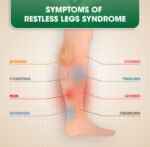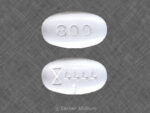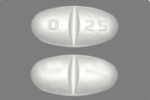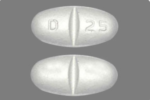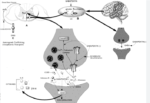Migraine is a neurological disorder characterized by recurrent, often severe headaches.
Migraine Symptoms
Migraine attacks are typically accompanied by a range of symptoms that can vary from person to person and from one migraine episode to another. Here is a list of common symptoms associated with migraines:
- Headache: The hallmark symptom of a migraine is a throbbing or pulsating headache, usually on one side of the head. However, it can also affect both sides.
- Aura: Not all migraine sufferers experience auras, but some do. An aura is a set of neurological symptoms that precede or accompany the migraine headache. Aura symptoms can include visual disturbances (flashing lights, zigzag lines, blind spots), sensory changes (tingling or numbness), and difficulty speaking or thinking.
- Nausea: Many people with migraines experience nausea or vomiting during an attack.
- Sensitivity to Light (Photophobia): Bright lights, sunlight, or even normal indoor lighting can exacerbate migraine symptoms and cause discomfort.
- Sensitivity to Sound (Phonophobia): Loud noises or certain sounds may intensify migraine pain and discomfort.
- Sensitivity to Smells (Osmophobia): Strong odors or specific smells can trigger or worsen migraines for some individuals.
- Pain on One Side of the Head: Migraines often present as a one-sided headache, but this can vary.
- Pulsating or Throbbing Pain: The headache pain is often described as a pulsating or throbbing sensation.
- Moderate to Severe Pain: Migraine headaches can be intensely painful and debilitating, leading to difficulty performing daily activities.
- Visual Symptoms (Without Aura): Some people experience visual disturbances during a migraine attack, even without a classic aura. This can include blurry vision, difficulty focusing, or other visual changes.
- Fatigue: Migraine attacks can leave individuals feeling extremely tired and drained.
- Neck Stiffness: Some individuals with migraines may experience neck stiffness or tension.
- Loss of Appetite: Migraine attacks can lead to a decreased desire to eat.
- Irritability: Many people with migraines experience mood changes, including irritability, during an attack.
It’s important to note that not everyone with migraines will experience all of these symptoms, and the severity and duration of symptoms can vary widely between individuals and episodes. Migraine triggers, such as certain foods, stress, hormonal changes, and environmental factors, can also play a role in the onset of a migraine attack.

Migraine Prodrome
The prodrome phase of a migraine is a set of symptoms or warning signs that can occur hours or even days before the onset of the actual migraine headache. Not everyone with migraines experiences a prodrome, but for those who do, recognizing these early symptoms can be valuable for preparing and managing the impending migraine attack. Prodrome symptoms can vary from person to person but often include:
- Mood Changes: Many individuals experience mood changes during the prodrome phase. This can include feelings of irritability, depression, or euphoria.
- Fatigue: A sense of tiredness or fatigue may set in before the migraine attack.
- Food Cravings: Some people develop specific food cravings, often for sweet or salty foods, during the prodrome phase.
- Thirst: Increased thirst or a strong desire to drink more fluids can be a prodrome symptom.
- Neck Stiffness: Stiffness in the neck or muscles is a possible prodrome symptom for some individuals.
- Yawning: Excessive yawning, often more frequent than usual, can occur during the prodrome.
- Increased Urination: Some people notice an increase in urination frequency before a migraine attack.
- Visual Disturbances: In some cases, visual disturbances similar to those experienced during the aura phase can occur during the prodrome. These may include flashes of light or zigzag lines.
- Difficulty Concentrating: A sense of mental fog or difficulty concentrating may precede the migraine headache.
- Other Neurological Symptoms: In addition to visual disturbances, some people may experience other neurological symptoms during the prodrome, such as numbness or tingling.
It’s important to note that prodrome symptoms are not exclusive to migraines and can overlap with other conditions or everyday variations in mood and energy levels. However, when individuals who experience migraines regularly recognize these prodrome symptoms, they can take steps to manage their condition. This might include taking medication, finding a quiet and dark environment, and avoiding potential migraine triggers.
If you suspect you experience prodrome symptoms before your migraines, it can be helpful to keep a migraine diary to track patterns and identify potential triggers. This information can be valuable for both you and your healthcare provider in managing your migraines effectively.
Aura of Migraine
An aura is a set of neurological symptoms that some individuals experience before the onset of a migraine headache. Not all people with migraines experience auras, and the specific symptoms can vary from person to person. Migraine auras are usually temporary and typically last for less than an hour but can vary in duration. Here are some common aura symptoms associated with migraine:
- Visual Symptoms: Visual disturbances are the most common type of aura. These can include:
- Flashing Lights: Seeing flashes of light or bright spots.
- Zigzag Lines: Perceiving zigzag lines, often in a circular or wavy pattern.
- Blind Spots: Temporary blind spots or scotomas in the visual field.
- Tunnel Vision: A narrowing of the visual field, like looking through a tunnel.
- Sensory Symptoms: Some individuals experience sensory changes during a migraine aura. These can include:
- Tingling or Numbness: Sensations of tingling or numbness, typically starting in the face or hands and spreading.
- Pins and Needles: A sensation similar to pins and needles.
- Speech and Language Disturbances: Auras can affect speech and language, causing:
- Difficulty Speaking: Slurred speech or difficulty finding words.
- Motor Symptoms: In some cases, motor symptoms can occur, such as:
- Weakness: Temporary muscle weakness or difficulty moving certain body parts.
- Auditory Symptoms: While less common, some people may experience auditory symptoms:
- Hearing Changes: Ringing in the ears or changes in hearing.
- Other Symptoms: Auras can also include other neurological symptoms like confusion or changes in consciousness.
It’s important to note that the aura phase is distinct from the migraine headache itself. Auras usually precede the headache and serve as a warning sign. Not everyone with migraines experiences auras, and some may only have the headache without any preceding aura.
Migraine Attack
A migraine attack is a term used to describe the episode or period during which a person experiences a migraine headache. Migraine is a neurological disorder characterized by recurrent, often severe headaches that can be accompanied by various symptoms. Here’s an overview of what happens during a migraine attack:
- Onset: A migraine attack typically begins with the onset of a headache. This headache is often described as pulsating, throbbing, and intense. It can be located on one side of the head or on both sides. The onset of a migraine attack can vary from person to person.
- Duration: Migraine attacks can last anywhere from a few hours to several days. The duration can also vary from one migraine episode to another for the same individual.
- Pain Intensity: The pain during a migraine attack is usually moderate to severe and can be debilitating. It often interferes with daily activities, making it difficult for the person to work, study, or perform other tasks.
- Accompanying Symptoms: Migraine attacks are often accompanied by a range of symptoms, which can include:
- Aura: Some individuals experience auras before or during the migraine attack. Auras are neurological symptoms that can involve visual disturbances, sensory changes, and speech difficulties.
- Nausea: Many people with migraines experience nausea and may even vomit during an attack.
- Sensitivity to Light (Photophobia): Bright lights or sunlight can worsen migraine symptoms, leading to discomfort and the need to be in a dark room.
- Sensitivity to Sound (Phonophobia): Loud noises or certain sounds can exacerbate the pain and discomfort of a migraine.
- Sensitivity to Smells (Osmophobia): Strong odors or specific smells may trigger or worsen migraines.
- Fatigue: Migraine attacks often leave individuals feeling extremely tired and drained.
- Neck Stiffness: Some individuals may experience neck stiffness or tension.
- Triggers: Migraine attacks can be triggered by various factors, such as certain foods, hormonal changes, stress, lack of sleep, weather changes, and environmental factors.
- Relief: Some individuals find relief from their migraine symptoms by resting in a quiet, dark room, applying cold or hot packs to the head or neck, or taking prescribed medications (both acute and preventive medications).
Migraine Post-drome
The post-drome phase of a migraine, sometimes referred to as the “migraine hangover” or the “migraine aftermath,” occurs after the acute symptoms of a migraine attack have subsided. This phase can last for hours to several days, and while it is often less severe than the migraine attack itself, it can still be quite uncomfortable. The post-drome phase varies from person to person, but common characteristics and symptoms include:
- Fatigue: A prominent symptom of the post-drome phase is a lingering sense of fatigue or exhaustion. Even after the headache has resolved, individuals may feel unusually tired and lacking in energy.
- Mood Changes: Some people experience mood changes during the post-drome, such as feelings of sadness, irritability, or mood swings. This can be related to the physical and emotional toll of the migraine attack.
- Difficulty Concentrating: Cognitive difficulties, often referred to as “brain fog,” can persist during the post-drome phase. People may find it challenging to concentrate, think clearly, or perform tasks that require mental focus.
- Sensitivity: While sensitivity to light (photophobia) and sound (phonophobia) typically improve once the headache is gone, some individuals may still be more sensitive than usual during the post-drome.
- Nausea: Nausea and gastrointestinal symptoms may continue or linger after the headache has subsided in some cases.
- Dizziness: A feeling of dizziness or unsteadiness can persist during the post-drome phase for some individuals.
- Neck and Muscle Tension: Neck stiffness and muscle tension, which may have been present during the migraine attack, can continue into the post-drome phase.
- Appetite Changes: Some people experience changes in appetite, often with a reduced desire to eat, during the post-drome.
It’s important to note that the post-drome phase is a normal part of the migraine cycle, and its duration and severity can vary. Individuals may find relief and improvement with rest, hydration, and self-care measures, such as relaxation techniques, gentle exercise, and maintaining a regular sleep schedule. Over-the-counter pain relievers may also be helpful if residual headache or discomfort persists, but it’s important to follow the guidance of a healthcare provider for appropriate treatment.
People who experience migraines, including the post-drome phase, on a regular basis should work with a healthcare professional to develop a comprehensive migraine management plan tailored to their specific needs and triggers.
Gabapentin for the Prophylaxis of Episodic Migraine in Adults
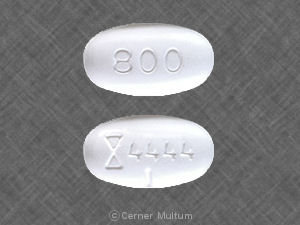
A new review indicates that gabapentin may be an effective adjunct therapy for primary headache syndromes, but that there is not enough evidence to support its use as a primary treatment. This study on the off-label use of gabapentin for headache disorders appears online in the in the journal Pain Medicine.
For the review, 56 articles were identified and eight clinical trials with quality of evidence Class 2 or higher based on American Academy of Neurology criteria. Seven showed statistically significant clinical benefit from gabapentin in various headache syndromes (although the effects were modest at times) and one study had concerning intention-treat analysis breaches and primary outcomes. The primary outcomes in the review included frequency and intensity of migraine attacks, percentage of headache-free days per months in chronic daily headache, and episode duration and intervals for cluster headache.
It is believed that gabapentin may reduce the release of inflammatory neuropeptides implicated in headache pain, such as calcitonin gene-related peptide (CGRP) and substance P; it could also reduce the release of excitatory neurotransmitters such as glutamate. However, the authors concluded that there is not sufficient evidence to support it as primary therapy and that its use for headache syndromes should be evaluated on a case-by-case basis.
Pain Medications, Pain Relief, and Pain Management
